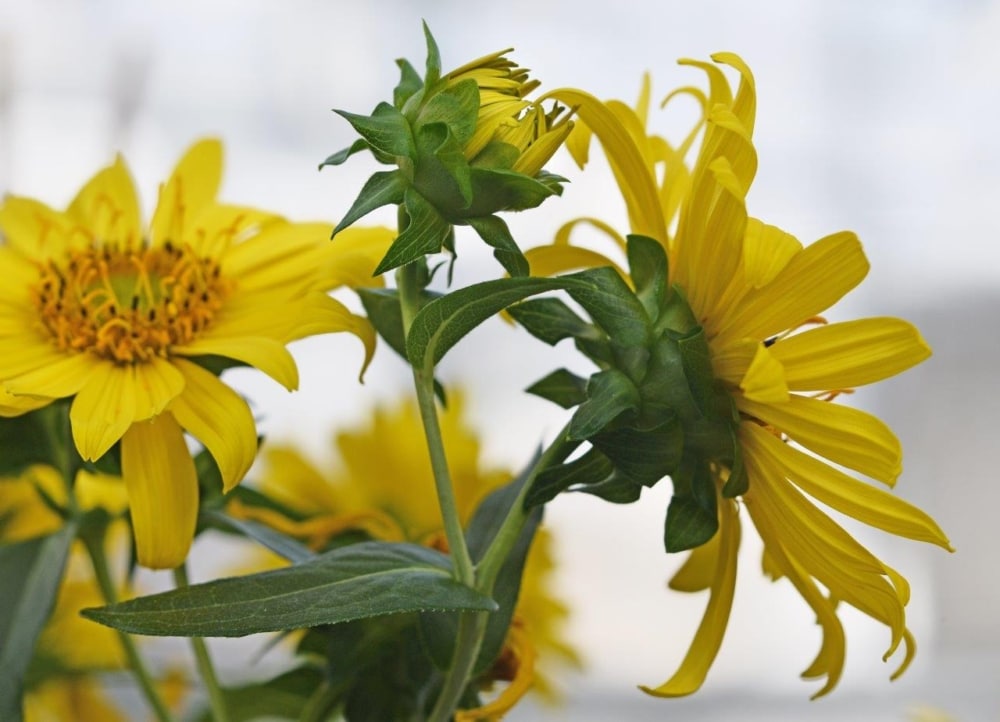Research from The Land Institute’s collaborators in Germany details the use of perennial species for biomass production, with the goal of analyzing the value of Silphium for the energy production and manufacturing industries and creating the case for Silphium as a multi-use crop.
Abstract
For higher sustainability in biomass production the use of new perennial species can lead to sustainable progress in the energy production and manufacturing industry. During the last decades, two different species of Silphium were discussed for biomass production. However, some questions regarding their cultivation and different uses are still to be answered. In this study, two accessions of Silphium perfoliatum L. and Silphium integrifolium Michx. were investigated during the year of establishment, and the first generative year for the phenotypic characteristics and suitability for cultivation, under Central European field conditions. Intra- and interspecific comparisons were made with special attention to their growth kinetics. While cup plant (S. perfoliatum) is well known as a potential biomass crop in Europe, silflower (S. integrifolium) is still unknown. In intraspecific comparison, S. integrifolium shows a more uniform development than S perfoliatum. In parallel, the development of S. perfoliatum accessions is temporally shifted, so that the S. perfoliatum accessions differ in the length of their phases of generative growth and onset of senescence in comparison to S. integrifolium. To make these results applicable, an improvement proposal was made to the existing BBCH scale for S. perfoliatum. In addition, an adaptation was conducted on S. integrifolium.
Link to publication


